
Feature Photo: Fotopersbureau De Boer, CC0, via Wikimedia Commons
Frank Zappa stands alone, a monolith of modern musical talent and a singular figure in the cultural landscape of the 20th century. To categorize him as a “rock musician” is to fundamentally misunderstand the scope and ambition of his life’s work. He was, first and foremost, a composer—a prolific, self-taught, and uncompromisingly modern artist who saw music not as a collection of genres, but as a vast, unified field of sound ripe for organization and satirical commentary. Over a career spanning three decades, he released more than 60 albums, with his posthumous discography swelling that number to 130, a testament to his relentless work ethic and the sheer volume of his output. Zappa was a cultural gadfly, an innovative record producer, a virtuoso guitarist, and a fierce defender of free expression, but all these roles were subservient to his primary identity as a composer in the tradition of his idols: Edgard Varèse, Igor Stravinsky, and Anton Webern.
His central project was a relentless, multi-decade assault on the perceived hierarchies separating “high” and “low” culture. He saw no contradiction in his simultaneous love for the complex atonality of 20th-century classical modernism and the visceral simplicity of 1950s rhythm and blues and doo-wop. To Zappa, a vocal harmony by The Jewels, a guitar lick from Johnny “Guitar” Watson, and a percussive blast from Varèse all stemmed from the same universal source: an artist with the nerve to present an undiluted vision. He described this as a “totally unified field theory” of music, stating simply, “To me it was all good music.” This philosophy drove him to create a body of work that is defiantly, and deliberately, difficult to categorize, fusing rock, jazz, classical, and avant-garde noise into a hybrid style that was uniquely his own.
This entire artistic output was interconnected by a principle he called “Conceptual Continuity,” the idea that every album, every song, every lyrical motif, and every instrumental flourish was part of a single, overarching piece of art. His life’s work was not a series of disparate albums but the construction of a vast, self-referential artistic universe. Zappa’s rebellion against categorization was more than a musical choice; it was a worldview, an ethos forged in the crucible of a strange and difficult childhood. As a sickly, intellectually restless, and non-conformist youth, he often felt like an outsider, and his music became the ultimate expression of that status—a place where all sounds were equal, all ideas were permissible, and all sacred cows were targets for elaborate, meticulously composed ridicule. His career can thus be understood as the creation of a grand, unified statement, a project in which the Mothers of Invention, his solo albums, his orchestral works, and his political activism were all merely different movements in a single, epic composition.
II. The Cucamonga Years: Forging a Composer (1940-1964)
Frank Vincent Zappa’s unique artistic sensibility was not born in a vacuum; it was forged in a peculiar and often painful crucible of chronic illness, a transient upbringing steeped in the aesthetics of the American military-industrial complex, and a fiercely independent, self-directed musical education. His profound cynicism, his deep-seated distrust of authority, and his obsession with themes of disease and social control were not abstract intellectual positions but were viscerally rooted in the experiences of his youth.
A Peripatetic and Pathological Childhood
Born on December 21, 1940, in Baltimore, Maryland, Zappa was the eldest of four children in a Sicilian-American family where Italian was often spoken by his immigrant grandparents. His father, Francis Vincent Zappa, was a chemist, mathematician, and metallurgist whose career was inextricably linked to the U.S. defense industry. This work kept the family in a constant state of motion, moving from Maryland to Florida and eventually to California. A significant portion of Zappa’s childhood was spent in close proximity to the Edgewood Arsenal, a chemical warfare facility at the Aberdeen Proving Ground in Maryland. The family home was so near the arsenal, which stored mustard gas, that they kept gas masks on hand for emergencies. This early exposure to the hidden, ominous world of military science left an indelible mark on Zappa, with germs, germ warfare, and the defense industry becoming recurring motifs throughout his musical and lyrical work.
This environment was compounded by a litany of health problems. Zappa was a chronically sick child, suffering from severe asthma, persistent earaches, and sinus problems. His parents, following the medical advice of the time, subjected him to a disturbing treatment for his sinusitis: a doctor inserted a pellet of radium into each of his nostrils. Little was then known about the dangers of therapeutic radiation, and Zappa himself later speculated that this procedure could have contributed to the prostate cancer that ultimately took his life. The constant presence of illness and invasive, questionable medical procedures shaped his worldview. His body was a site of unexplained suffering, and his art would later be filled with grotesque bodily imagery and a deep-seated suspicion of authority figures, medical or otherwise, who claimed to have answers.
A Self-Directed Musical Awakening
Zappa’s formal education was disjointed due to his family’s frequent moves; he attended at least six different high schools and was often a bored and disruptive student. He briefly attended Chaffey College in 1959 but quickly dropped out, cementing a lifelong disdain for formal education. He would later take his own children out of school at age 15 and refuse to pay for their college education. His real education was happening at home, on his own terms.
His musical journey began in earnest around age 12, when his parents bought a phonograph and he started obsessively collecting records. His interests were, from the beginning, strikingly eclectic. He was captivated by the raw energy of African-American rhythm and blues and doo-wop, collecting singles by artists like Johnny “Guitar” Watson, Howlin’ Wolf, and The Robins. Simultaneously, he embarked on a quest for the most esoteric and challenging sounds he could find. This quest was famously sparked by an article in LOOK magazine that described Edgard Varèse’s percussion composition Ionisation as “a weird jumble of drums and other unpleasant sounds.” Intrigued, Zappa spent over a year searching for the album, The Complete Works of Edgard Varèse, Volume One. When he finally found a copy, he didn’t have enough money, but he successfully persuaded the salesman to sell it to him at a discount. This record became the cornerstone of his musical philosophy.
His mother, Rose Marie, encouraged his burgeoning passion, indulging him with a long-distance call to Varèse in New York for his fifteenth birthday. Varèse was in Europe, but his wife promised to pass on the message. Later, Zappa received a letter from the composer, thanking him for his interest and mentioning a new piece he was working on called “Déserts.” For a teenager living in the desert town of Lancaster, California, this was a moment of profound connection. Zappa framed the letter and kept it for the rest of his life, a sacred relic from his artistic hero.
By his final years in high school, Zappa was no longer just a listener. He had switched from drums to the guitar and was actively writing, arranging, and conducting his own avant-garde performance pieces for the school orchestra. After leaving college, he took a series of odd jobs, including designing greeting cards and playing in bar bands. A pivotal experience came when he began working at the Pal Recording Studio in Cucamonga, which he later purchased and renamed “Studio Z.” There, he immersed himself in the mechanics of sound recording, experimenting with tape manipulation and overdubbing while composing scores for low-budget films. In 1963, he gained his first national exposure, not as a rock musician, but as an experimental composer, appearing on The Steve Allen Show to perform a “Concerto for Two Bicycles,” which involved playing the spokes of a bike, blowing through the handlebars, and triggering pre-recorded tape loops. This performance was a perfect encapsulation of the artist he had become: a serious composer with a prankster’s heart, using the detritus of everyday life to create organized sound, erasing the line between music and noise just as his hero Varèse had done.
III. The Mothers of Invention: Necessity and Invention (1965-1969)
The original Mothers of Invention were not a rock band in any conventional sense. They were a social experiment, an “electric chamber ensemble,” and the primary vehicle for Frank Zappa’s burgeoning compositional ambitions and his lacerating critique of American culture. Their brief but incandescent run from 1965 to 1969 produced a body of work that challenged the very definitions of popular music, targeting not only the complacency of the establishment but also the perceived hypocrisies of the burgeoning 1960s counter-culture.
From The Soul Giants to The Mothers
The group’s origins were humble. In 1964, Zappa was asked to join a local R&B covers band from Pomona called The Soul Giants. The lineup included vocalist Ray Collins, bassist Roy Estrada, and drummer Jimmy Carl Black. Zappa, who had just spent time in jail on a dubious obscenity charge related to an audio tape he produced at Studio Z, quickly asserted his creative will. He insisted that the band abandon their repertoire of bar-band standards and perform his original, far more complex material instead. On Mother’s Day, 1965, he convinced them to change their name to The Mothers.
The band struggled initially, but their bizarre, high-energy performances in the underground clubs of Los Angeles began to attract a following. It was at the Whisky a Go Go that they were spotted by Tom Wilson, a prominent record producer for MGM’s Verve Records, who had worked with Bob Dylan and Simon & Garfunkel. Wilson, having only heard their song “Trouble Every Day,” a commentary on the Watts riots, signed them under the mistaken impression that they were a white blues band. When he got them into the studio, he discovered something far stranger. MGM executives, meanwhile, balked at the name “The Mothers,” finding it too suggestive. Zappa wryly suggested a solution: “out of necessity,” he later said, “we became the Mothers of Invention.”
Freak Out! (1966): The Opening Salvo
Wilson’s initial shock gave way to enthusiasm, and he championed the band, securing them a more or less unlimited budget to record their debut. The result was Freak Out!, released in June 1966. It was a landmark release on multiple fronts: one of rock’s first-ever double albums, the first two-record debut, and a pioneering concept album. The album was a satirical tour de force, a sardonic expression of Zappa’s perception of American pop culture and the nascent “freak scene” of Los Angeles.
The first half of the album consists of relatively concise songs that both parody and perfect various pop forms. It opens with the fuzz-drenched protest of “Hungry Freaks, Daddy,” which attacks the American school system, and moves through doo-wop pastiche (“Go Cry on Somebody Else’s Shoulder”), blues-rock (“I Ain’t Got No Heart”), and early psychedelic rock (“Who Are the Brain Police?”). The second half, however, explodes into pure avant-garde experimentation. The final two sides are dedicated to long-form, abstract sound collages, most notably the nearly 13-minute “The Return of the Son of Monster Magnet,” a percussive jam session featuring a chaotic assembly of “freaks” Zappa had brought in from the Sunset Strip. This fusion of pop satire and musique concrète was unprecedented. While it was poorly received in the U.S., it found an audience in Europe and had a profound influence on other musicians, most notably The Beatles, who cited it as a key inspiration for Sgt. Pepper’s Lonely Hearts Club Band.
We’re Only in It for the Money (1968): The Satirical Masterpiece
If Freak Out! was a celebration of outsider “freak” culture, the Mothers’ third album, We’re Only in It for the Money, was a scathing indictment of what that culture had become. By 1968, the “freak scene” had morphed into the mainstream “hippie” movement, and Zappa, observing it from the band’s new base in New York City, was deeply unimpressed. He saw the Summer of Love not as a genuine revolution, but as a shallow, commercialized trend populated by privileged youths. His critique was not a conservative backlash but a radical’s disappointment. He viewed the hippie movement as a failure of its own revolutionary potential, a different brand of the same consumerist phoniness he saw in straight society.
This critique crystallized in We’re Only in It for the Money. The album is a direct and merciless parody of Sgt. Pepper, an album Zappa felt was insincere and a symbol of the corporatization of youth culture. The original cover art, which MGM delayed for months, featured the Mothers in drag, mimicking the Beatles’ pose against a stormy, yellow backdrop. The music itself is a dense, disorienting collage of short songs, spoken-word segments, and studio noise, held together by abrupt edits and sped-up tape effects. Lyrically, it attacks both sides of the cultural divide. “Who Needs the Peace Corps?” mocks the superficiality of a San Francisco hippie, while “Concentration Moon” draws a chilling parallel between police crackdowns on youth and the internment of Japanese-Americans during World War II. The central question of the album, posed in the doo-wop parody “What’s the Ugliest Part of Your Body?,” is answered with a damning verdict on the entire culture: “I think it’s your mind.” Zappa was not a hippie; he was, as he insisted, a “freak,” and this album was his declaration of independence from a counter-culture he saw as just another form of conformity.
The Dissolution of the Original Mothers
Despite their critical acclaim and growing influence, the original Mothers of Invention were not commercially successful, and the financial strain of keeping a nine-piece band on the road was immense. More importantly, Zappa was growing artistically frustrated. The band’s music was evolving toward a form of “electronic chamber music,” but audiences and critics were not keeping pace. He complained that one critic dismissed his bassoon concerto as an “oboe concerto” and “classical garbage.” He grew “tired of playing for people who clap for all the wrong reasons.”
In 1969, after a final tour of Canada, Zappa disbanded the group. He felt it was time to give people a chance to absorb what the Mothers had already done before he pushed them any further. The breakup freed him to focus on other projects, including producing records for his own Bizarre and Straight labels and, most significantly, completing his first official solo album, a jazz-rock masterpiece that would set the course for the next phase of his career.
IV. The Solo Auteur and the Jazz-Rock Nexus (1969-1979)
The dissolution of the original Mothers of Invention in 1969 marked a pivotal turning point in Frank Zappa’s career. Freed from the financial and artistic constraints of the nine-piece ensemble, he entered a decade of astonishing productivity, solidifying his identity as a solo artist, a demanding bandleader of ever-more-virtuosic groups, and one of the era’s most formidable guitarists and composers. This period was defined by a series of landmark albums that pushed the boundaries of jazz-rock fusion, balanced with increasingly theatrical and controversial stage shows. It was also a decade marked by near-fatal disaster, an event that paradoxically reinforced his artistic trajectory, pushing him deeper into the realm of pure composition.
Hot Rats (1969): The Jazz-Rock Blueprint
Released in October 1969, just months after the Mothers’ breakup, Hot Rats was Zappa’s second solo album (following the orchestral Lumpy Gravy) but his first in the rock idiom. It was a radical departure from the satirical, collage-based work of the Mothers. Almost entirely instrumental, the album was a focused exploration of jazz-rock fusion, a genre it helped to define. Zappa utilized the advanced technology of a 16-track recording studio to create dense, layered arrangements, showcasing his compositional sophistication in tightly constructed pieces like the sumptuous opener, “Peaches en Regalia.”
Crucially, Hot Rats was the first album to put Zappa’s own guitar virtuosity front and center. Three of the album’s six tracks are extended improvisational workouts, allowing him to unleash his wonderfully scuzzy, distorted, and highly personal guitar style. The nine-minute “Willie the Pimp” is a greasy blues-rock jam featuring the guttural, Howlin’ Wolf-esque vocals of his childhood friend, Captain Beefheart (Don Van Vliet), and a long, agitated slalom of a guitar solo that became an instant classic. The album featured a cast of stellar musicians, including multi-instrumentalist Ian Underwood, jazz violinists Jean-Luc Ponty and Don “Sugarcane” Harris, and future Little Feat founder Lowell George, but Zappa was unquestionably the star. Hot Rats was a critical and commercial success, especially in Europe, and it established the template for much of his work in the decade to come: complex, jazz-inflected instrumental music performed by a rotating cast of top-tier musicians.
The Flo & Eddie Era and the Brink of Disaster (1970-1971)
In 1970, Zappa resurrected the Mothers name, but with an entirely new lineup. This version of the band featured the formidable vocal duo of Mark Volman and Howard Kaylan, formerly of the 1960s pop group The Turtles. Contractually barred from using their own names, they were credited as “The Phlorescent Leech & Eddie,” or Flo & Eddie for short. This incarnation of the Mothers, which also included powerhouse drummer Aynsley Dunbar and keyboardist George Duke, was a far more theatrical and comedic entity than its predecessor. Their live shows were legendary for their mix of musical virtuosity and Vaudevillian, often sexually explicit, humor. This era is documented on the live album Fillmore East – June 1971 and the surrealistic feature film 200 Motels, which co-starred Ringo Starr and Keith Moon.
This period of manic creativity came to a horrifying halt in December 1971. On December 4, during a concert at the Montreux Casino in Switzerland, a fan fired a flare gun into the ceiling, igniting a massive fire that destroyed the venue and all of the band’s equipment. The event was immortalized in the lyrics of Deep Purple’s classic song, “Smoke on the Water.” Just one week later, on December 10, tragedy struck again. During a concert at the Rainbow Theatre in London, a jealous fan rushed the stage and pushed Zappa into the concrete orchestra pit. The fall was devastating. Zappa suffered multiple serious fractures, a head injury, a crushed larynx, and severe, chronic back and leg pain. He spent the better part of a year in a wheelchair, and the attack left him with a permanent limp and a noticeably deeper, raspier voice.
The attack was a pivotal moment. The forced, year-long hiatus from touring effectively ended the Flo & Eddie version of the Mothers and pushed Zappa away from the chaotic world of the rock ‘n’ roll stage and deeper into the controlled environment of the studio. During his recovery, he focused his energy on composing large-scale big-band and orchestral music, resulting in the complex, jazz-heavy instrumental albums Waka/Jawaka and The Grand Wazoo (both 1972). This period of forced introspection and intense composition was a catalyst, accelerating his evolution from a rock bandleader toward the pure composer he had always considered himself to be.
The Mid-70s Virtuosos and Mainstream Success
When Zappa returned to touring in 1973, it was with a new iteration of the Mothers, an ensemble of staggering technical proficiency. This lineup, and subsequent versions throughout the mid-70s, featured some of the most talented musicians he ever worked with, including keyboardist George Duke, percussionist Ruth Underwood, trumpeter Sal Marquez, trombonist Bruce Fowler, and violinist Jean-Luc Ponty. This band was capable of executing his increasingly complex and rhythmically demanding music with a precision that had previously been elusive.
This period produced a string of his most critically acclaimed and commercially successful albums. Over-Nite Sensation (1973) and Apostrophe(‘) (1974) masterfully blended intricate, sophisticated jazz-rock instrumentals with Zappa’s signature brand of humorous, story-driven satire. Songs like “Dinah-Moe Humm” and “Don’t Eat the Yellow Snow” became fan favorites and even garnered some radio play, with Apostrophe(‘) becoming his first top 10 album in the U.S. Albums like Roxy & Elsewhere (1974) and One Size Fits All (1975) captured the stunning live virtuosity of this band, with complex pieces like “Echidna’s Arf (Of You)” and “Inca Roads” showcasing the almost telepathic interplay between the musicians.
As the decade drew to a close, Zappa’s work became even more ambitious. He retired the Mothers of Invention name for good after 1975, releasing albums under his own name that continued to explore the fusion of rock and jazz. The late 70s also saw him engage in protracted legal battles with his distributor, Warner Bros. Records, which led to the unauthorized release of several albums, including Studio Tan and Sleep Dirt. He capped the decade with two of his most iconic projects. Sheik Yerbouti (1979) was a double album that featured the Grammy-nominated disco parody “Dancin’ Fool” and the controversial “Bobby Brown Goes Down,” a song that became a massive hit in Europe despite its explicit lyrics. This was followed by Joe’s Garage (1979), a sprawling, three-act rock opera that tells the story of a young guitarist whose passion for music is criminalized by a totalitarian government. A powerful satire of censorship, religion, and the music industry, the opera contains some of Zappa’s most poignant and celebrated guitar work, particularly the majestic closing instrumental, “Watermelon in Easter Hay.”
V. The Digital Craftsman: The Synclavier Era (1980-1988)
The final decade of Frank Zappa’s active career marked his ultimate evolution as a composer, a period in which he largely abandoned the traditional rock band format in favor of a revolutionary new instrument: the New England Digital Synclavier. This was not merely a stylistic shift or a fascination with new technology. For Zappa, the Synclavier was the logical and ultimate conclusion of a lifelong quest for total compositional control. It was the solution to the central conflict of his career: the frustrating gap between the boundless complexity of his musical imagination and the inherent physical and personal limitations of human performers. With the Synclavier, he could finally eliminate all intermediaries, becoming at once the composer, the conductor, and the entire orchestra.
The Ultimate Compositional Tool
In the early 1980s, Zappa invested heavily in the Synclavier, a state-of-the-art digital music workstation that combined synthesis, sampling, and sequencing capabilities. It was an enormously expensive piece of equipment, and Zappa famously quipped that while other rock stars were spending their fortunes on drugs, “instead of sticking the money up my nose, I went out and bought machinery.” For a perfectionist bandleader who had spent years drilling musicians to play his notoriously difficult music, the machine was a revelation.
The primary advantage of the Synclavier was its ability to execute his ideas with absolute precision. Zappa could compose rhythms and polyrhythms of a complexity that, as he stated, “human beings have difficulty contemplating, let alone executing.” He was no longer limited by a drummer’s stamina, a brass player’s lung capacity, or a musician’s personal life. He could compose directly into the machine’s interface or via its keyboard, controlling every conceivable parameter of the sound—pitch, duration, velocity, timbre, and phrasing—with microscopic accuracy. This represented the ultimate realization of his desire for artistic autonomy. The Synclavier became his primary compositional tool, replacing the pencil and paper he had used for decades.
Key Works of the Digital Era
Zappa’s first major work composed almost entirely on the Synclavier was Jazz from Hell, released in 1986. The album, a collection of intricate and rhythmically dense instrumental pieces, is a tour de force of digital composition. Pieces like “G-Spot Tornado” feature dizzying tempos and complex melodic lines that would be nearly impossible for a full ensemble to perform live (though the Ensemble Modern would later prove him wrong). The album won Zappa his only competitive Grammy Award, for Best Rock Instrumental Performance in 1988, an ironic honor for a work created with minimal rock instrumentation.
Other albums from this period also showcased his mastery of the new technology. Boulez Conducts Zappa: The Perfect Stranger (1984) featured pieces performed by the prestigious Ensemble InterContemporain, conducted by Pierre Boulez, alongside several compositions realized by Zappa alone on the Synclavier. He even used the machine to create an entire album of music by the 18th-century composer of the same name, Francesco Zappa (1984). His final, monumental work, Civilization Phaze III, released posthumously in 1994, was a major Synclavier piece that he had been working on since the early 80s, a dense and challenging culmination of his experiments with organized sound.
The Unlikely Hit and the Final Tour
In the midst of this deep dive into electronic abstraction, Zappa scored the biggest and most improbable commercial hit of his career. In 1982, he released the single “Valley Girl,” a song built around a satirical monologue delivered by his then-14-year-old daughter, Moon Unit. The track, which affectionately lampooned the unique slang of teenagers in California’s San Fernando Valley (“Gag me with a spoon!”), became a cultural phenomenon and propelled the album Ship Arriving Too Late to Save a Drowning Witch into the charts.
Despite his increasing focus on studio composition, Zappa embarked on one final, ambitious tour in 1988. He assembled a large, 12-piece band that included a five-man horn section and was capable of playing a massive and diverse repertoire of his music, from early Mothers classics to complex new arrangements. The tour was artistically successful, showcasing a band at the peak of its powers, but it ended prematurely due to internal friction and financial disputes. The concerts were extensively recorded and later released on a series of acclaimed live albums, including Broadway the Hard Way (which focused on political satire), The Best Band You Never Heard in Your Life (featuring rock and pop covers), and Make a Jazz Noise Here (highlighting complex instrumentals and guitar solos). This final tour was a fitting bookend to his live career, a last demonstration of his ability to lead a world-class ensemble before he retreated permanently to the digital sanctuary of his studio.
VI. The Citizen-Composer: Zappa vs. The Senate
In 1985, Frank Zappa stepped onto a different kind of stage, trading the concert hall for a Senate hearing room in Washington, D.C. His testimony before the Senate Commerce, Science, and Transportation Committee regarding proposed “parental advisory” labels on records remains one of the most iconic and articulate defenses of free expression in American political history. This was not merely a rock star complaining about censorship; it was a fiercely intelligent private citizen and composer dismantling a political initiative he saw as both constitutionally flawed and intellectually dishonest. He approached the hearing with the same strategic mind he applied to his complex compositions, masterfully reframing the debate from one of moral panic to one of constitutional law, consumer rights, and corporate collusion.
The PMRC and the “Porn Rock” Panic
The hearing was instigated by the Parents Music Resource Center (PMRC), a committee co-founded by several influential “Washington Wives,” most notably Tipper Gore (wife of then-Senator Al Gore). The PMRC had compiled a list of songs they deemed objectionable—the “Filthy Fifteen”—and were lobbying the recording industry to adopt a ratings system similar to that used for films, to warn parents of explicit content related to sex, violence, and drug use.
On September 19, 1985, Zappa appeared before the committee alongside country-pop singer John Denver and Twisted Sister frontman Dee Snider to testify against the proposal. While Denver spoke earnestly of his wholesome image and Snider defended his music against misinterpretation, Zappa took a different, more confrontational approach. He presented himself not as a representative of the music industry, but as a private citizen concerned with the erosion of civil liberties.
A Masterclass in Rhetoric and Logic
Zappa’s prepared statement was a masterpiece of political rhetoric. He began by calmly reading the full text of the First Amendment to the Constitution, immediately framing the issue as a fundamental matter of law, not taste. He then proceeded to systematically deconstruct the PMRC’s proposal, calling it “an ill-conceived piece of nonsense which fails to deliver any real benefits to children, infringes the civil liberties of people who are not children, and promises to keep the courts busy for years.” His most memorable line likened the PMRC’s heavy-handed approach to “treating dandruff by decapitation.”
He did not defend the lyrical content of artists like Prince or Sheena Easton. Instead, he attacked the logic of the proposed solution. He argued that an imposed rating system would “stigmatize” musicians as individuals, unlike film actors who are merely playing a role, and would open the door to an “endless parade of Moral Quality Control Programs based on ‘Things Certain Christians Don’t Like.'” He famously concluded, “Bad facts make bad law. And people who write bad laws are, in my opinion, more dangerous than songwriters who celebrate sexuality.”
Then, in a brilliant tactical move, Zappa pivoted, changing the subject entirely. He accused the major record labels and the Recording Industry Association of America (RIAA) of colluding with the PMRC. He alleged that the industry was willing to bargain away artists’ rights and accept a voluntary labeling system in exchange for the passage of a bill known as H.R. 2911, or the “Blank Tape Tax.” This bill would levy a private tax on blank cassette tapes and recorders, ostensibly to compensate the industry for home taping. Zappa reframed the entire “porn rock” hearing as a carefully orchestrated piece of political theater, a public relations smokescreen designed to distract from a corporate money grab.
Finally, in a stroke of satirical genius, he offered his own solution. If the PMRC’s true goal was to provide parents with consumer information, he argued, then the most effective method would be to print the full lyrics for every song on a uniform sheet included with the album. He then suggested, with a straight face, that if this was a matter of public interest, perhaps the government should pay for the printing. By taking the PMRC’s stated logic to its most absurd, bureaucratic conclusion, he exposed the folly of governmental intervention in artistic expression.
An International Symbol of Freedom
While some senators on the committee dismissed his testimony as “boorish,” Zappa’s articulate and unflinching defense of the First Amendment resonated deeply, particularly with those living under oppressive regimes. He became a cultural hero in Eastern Europe, where his music had been banned but circulated on bootleg tapes as a symbol of rebellion and free thought.
This status was cemented after the fall of the Berlin Wall. In 1990, following Czechoslovakia’s peaceful Velvet Revolution, the country’s new president, the playwright and longtime Zappa fan Václav Havel, invited Zappa to Prague. Havel, who deeply admired Zappa’s dedication to individual freedom, named him a “special ambassador to the West on trade, culture and tourism.” The appointment was short-lived; the U.S. government under President George H. W. Bush, uncomfortable with the arrangement, pressured Havel to retract it. Nevertheless, the event served as a powerful testament to Zappa’s global impact, validating his lifelong belief that the most potent political statements are often artistic ones.
VII. The Classical Maverick
Throughout his career, Frank Zappa bristled at the confines of the rock and roll world, consistently identifying himself not as a rock star, but as a composer. His lifelong ambition was to be recognized as a “serious” artist in the tradition of his 20th-century classical heroes. This ambition led him to create a substantial and challenging body of orchestral and chamber music, a parallel career that was often misunderstood by the rock press and met with a mixture of admiration and frustration by the classical establishment. The journey culminated at the very end of his life in a collaboration that provided the ultimate validation he had sought for decades, resolving the central artistic tension of his career.
A Lifelong Pursuit
Zappa’s passion for modern classical music was not a late-career affectation; it was the foundational element of his musical identity. He began writing orchestral music in high school, long before he wrote his first rock and roll song, but lamented that he “couldn’t get it played.” His discovery of Edgard Varèse as a teenager was a formative, life-altering event, and his work is saturated with the influence of Varèse, Stravinsky, and other modernist composers. He saw his own compositional process as an extension of Varèse’s aesthetic, a system of organizing sound through “weights, balances, measured tensions and releases.”
He made numerous attempts to bridge the gap between his rock band and the orchestra. The 1971 film 200 Motels featured the Royal Philharmonic Orchestra alongside his rock ensemble. In 1975, he hired the 37-piece Abnuceals Emuukha Electric Symphony Orchestra for a series of concerts at UCLA, the recordings of which were eventually released on the album Orchestral Favorites in 1979.
His most high-profile orchestral projects came in the 1980s. He financed the recording of two albums with the prestigious London Symphony Orchestra, released as London Symphony Orchestra, Vol. I (1983) and Vol. II (1987). While the project fulfilled a long-held dream, the experience was deeply frustrating. Zappa was dismayed by what he perceived as a lack of care and precision from the musicians, and he spent an enormous amount of time and money in the studio digitally editing the tapes to correct mistakes and align the performances with his compositional intent. He also collaborated with the renowned French composer and conductor Pierre Boulez and his Ensemble InterContemporain for the 1984 album The Perfect Stranger. While these projects earned him a degree of respect in the classical world—conductor Zubin Mehta famously called him “one of the few rock musicians who knows my language”—they also highlighted the persistent difficulty of finding human performers who could flawlessly execute his rhythmically and harmonically complex vision.
The Yellow Shark (1993): The Final Validation
The ultimate resolution to this lifelong struggle came in 1991. Zappa was chosen as one of four featured composers at the prestigious Frankfurt Festival in Germany, alongside John Cage, Karlheinz Stockhausen, and Alexander Knaifel. He was approached by the German chamber group Ensemble Modern, which was interested in performing his music for the event.
Though he was already seriously ill with prostate cancer, Zappa invited the ensemble to Los Angeles to rehearse a program of new compositions and new arrangements of older material. The collaboration was a revelation. For the first time, Zappa encountered a world-class classical ensemble that not only possessed the technical virtuosity to master his notoriously difficult music but also embraced its spirit with enthusiasm and understanding.
The resulting concerts in Germany and Austria in the fall of 1992 were a triumph. Zappa, though frail, was able to travel to Frankfurt to conduct several pieces himself, including the overture and the frenetic “G-Spot Tornado.” The live recordings were compiled into the album The Yellow Shark, released just a month before his death in December 1993. The album was met with universal critical acclaim and stands as the definitive statement of his work as a “serious” composer.
The success of The Yellow Shark was more than just a final victory lap. It was the poignant and powerful resolution to the central tension of Zappa’s artistic life. For decades, he had been caught between the imperfectability of human musicians and the cold perfection of the Synclavier. The Ensemble Modern offered a third way: human performers with the technical prowess and artistic commitment to realize his vision without compromise. It was the perfect human translation of his most complex ideas and emotions, the direct, unmediated connection between composer’s intent and live performance that he had been striving for his entire career.
VIII. The Zappa Universe: Family, Death, and Legacy
Frank Zappa’s life was a study in contradictions. He was a fierce iconoclast who built a career on absolute artistic control, a defender of individual freedom who ran his bands with military precision, and a public provocateur who lived a largely private, work-obsessed life. This central paradox—the tension between freedom and control—extended into his family life and has come to define his complex and often contentious legacy in the years since his death.
The Family Unit
In 1967, Zappa married Adelaide Gail Sloatman, and they remained together for 26 years until his death. They raised four children in their sprawling Laurel Canyon home, giving them famously unconventional names that reflected their father’s irreverent worldview: Moon Unit, Dweezil, Ahmet Emuukha Rodan, and Diva Thin Muffin Pigeen.
The household revolved entirely around Frank’s work. He was a notorious workaholic, spending most of his waking hours locked away in his basement studio, the Utility Muffin Research Kitchen. His children have described him as an emotionally distant and demanding figure. Moon characterized him as being like “Spock and Jesus for a dad”—a brilliant, logical, and revered being who belonged to the world and had little time for the emotional needs of his family. He was, in Moon’s words, her “favorite human being ever, full stop,” yet his affection was something to be earned, often through participation in his work. He disdained conventional parenting, taking his children out of formal schooling at age 15 and raising them in an environment that was both creatively stimulating and deeply isolating.
Illness, Death, and the Trust
In 1990, Zappa was diagnosed with inoperable prostate cancer. He continued to work relentlessly, completing his final major projects, The Yellow Shark and Civilization Phaze III, even as his health rapidly deteriorated. He died at home on December 4, 1993, at the age of 52.
Before he died, Zappa reportedly gave his wife Gail a simple instruction: “sell the catalog… and get out of this business.” Instead, Gail, who had managed many of his business affairs in his later years, did the opposite. In 2002, she established the Zappa Family Trust (ZFT) to oversee his vast archive of unreleased music and to control the title and copyright to all of his artistic products and his commercial image.
Gail became the fierce and exacting guardian of her late husband’s legacy. Described as a “strong-willed and savvy business woman” and an “often litigious gatekeeper,” she adopted Frank’s ethos of absolute control and applied it with unwavering rigor. Her primary mission, as she saw it, was to protect the “intent of the composer.” This led her to engage in numerous legal battles, most famously sending cease-and-desist letters to Zappa tribute bands, accusing them of “identity theft” for performing Frank’s music. She felt that Zappa’s audience deserved to hear the music presented in the best possible way, as the composer intended, a standard she believed tribute acts could not meet.
The Legacy in Dispute
The seeds of the family conflict were sown by Gail herself. Before her death from lung cancer in 2015, she made a decision that would fracture the family. She designated her two younger children, Ahmet and Diva, as the successor trustees of the ZFT, giving them each a 30% share in the trust. Her two older children, Moon and Dweezil, were named only as beneficiaries, with smaller shares of 20% each, and no controlling interest in the family business.
The aftermath was a bitter and painfully public feud. Moon described the unequal distribution as a “hideous shock” and a “comical… level of betrayal” by a mother she called “mean.” The conflict was particularly acute for Dweezil. For over a decade, he had successfully toured with his project “Zappa Plays Zappa,” a virtuosic tribute that introduced his father’s complex music to a new generation of fans. After Gail’s death, the ZFT, now controlled by Ahmet, demanded that Dweezil pay a hefty fee to license the name. When he refused, he received a cease-and-desist letter from his own family’s trust and was forced to change the name of his show, at one point sarcastically calling it the “50 Years of Frank: Dweezil Zappa Plays Whatever the F@%k He Wants – The Cease and Desist Tour.”
Ahmet has defended his mother’s decisions and his own stewardship of the trust, stating that the family business was millions of dollars in debt when he took over and that his actions have been necessary to make it solvent and to continue funding the release of archival material from his father’s vault. He and vaultmeister Joe Travers have overseen a steady stream of posthumous releases, delighting hardcore fans. Nevertheless, the conflict has left deep scars, with Dweezil and Moon expressing profound hurt over their treatment and their exclusion from the management of their father’s legacy.
Frank Zappa – Complete Discography (Chronological Order)
Freak Out!
Released – 1966
Absolutely Free
Released – 1967
We’re Only in It for the Money
Released – 1968
Lumpy Gravy
Released – 1968
Cruising with Ruben & the Jets
Released – 1968
Mothermania
Released – 1969
Uncle Meat
Released – 1969
Hot Rats
Released – 1969
Burnt Weeny Sandwich
Released – 1970
Weasels Ripped My Flesh
Released – 1970
Chunga’s Revenge
Released – 1970
Fillmore East – June 1971
Released – 1971
200 Motels
Released – 1971
Just Another Band from L.A.
Released – 1972
Waka/Jawaka
Released – 1972
The Grand Wazoo
Released – 1972
Over-Nite Sensation
Released – 1973
Apostrophe (‘)
Released – 1974
Roxy & Elsewhere
Released – 1974
One Size Fits All
Released – 1975
Bongo Fury
Released – 1975
Zoot Allures
Released – 1976
Zappa in New York
Released – 1978
Studio Tan
Released – 1978
Sleep Dirt
Released – 1979
Sheik Yerbouti
Released – 1979
Orchestral Favorites
Released – 1979
Joe’s Garage, Act I
Released – 1979
Joe’s Garage, Acts II & III
Released – 1979
Tinsel Town Rebellion
Released – 1981
Shut Up ‘n Play Yer Guitar
Released – 1981
Shut Up ‘n Play Yer Guitar Some More
Released – 1981
Return of the Son of Shut Up ‘n Play Yer Guitar
Released – 1981
You Are What You Is
Released – 1981
Ship Arriving Too Late to Save a Drowning Witch
Released – 1982
The Man from Utopia
Released – 1983
Baby Snakes
Released – 1983
London Symphony Orchestra, Vol. I
Released – 1983
Boulez Conducts Zappa: The Perfect Stranger
Released – 1984
Them or Us
Released – 1984
Thing-Fish
Released – 1984
Francesco Zappa
Released – 1984
Old Masters, Box I
Released – 1985
Frank Zappa Meets the Mothers of Prevention
Released – 1985
Does Humor Belong in Music?
Released – 1986
Old Masters, Box II
Released – 1986
Jazz from Hell
Released – 1986
London Symphony Orchestra, Vol. II
Released – 1987
Old Masters, Box III
Released – 1987
Guitar
Released – 1988
You Can’t Do That on Stage Anymore, Vol. 1
Released – 1988
You Can’t Do That on Stage Anymore, Vol. 2
Released – 1988
Broadway the Hard Way
Released – 1988
You Can’t Do That on Stage Anymore, Vol. 3
Released – 1989
The Best Band You Never Heard in Your Life
Released – 1991
Make a Jazz Noise Here
Released – 1991
You Can’t Do That on Stage Anymore, Vol. 4
Released – 1991
You Can’t Do That on Stage Anymore, Vol. 5
Released – 1992
You Can’t Do That on Stage Anymore, Vol. 6
Released – 1992
Playground Psychotics
Released – 1992
Ahead of Their Time
Released – 1993
The Yellow Shark
Released – 1993
Civilization Phaze III
Released – 1994
The Lost Episodes
Released – 1996
Läther
Released – 1996
Frank Zappa Plays the Music of Frank Zappa: A Memorial Tribute
Released – 1996
Have I Offended Someone?
Released – 1997
Mystery Disc
Released – 1998
Everything Is Healing Nicely
Released – 1999
FZ:OZ
Released – 2002
Halloween
Released – 2003
Joe’s Corsage
Released – 2004
Joe’s Domage
Released – 2004
Quaudiophiliac
Released – 2004
Joe’s Xmasage
Released – 2005
Imaginary Diseases
Released – 2006
The MOFO Project/Object
Released – 2006
The MOFO Project/Object (fazedooh)
Released – 2006
Trance-Fusion
Released – 2006
Buffalo
Released – 2007
The Dub Room Special!
Released – 2007
Wazoo
Released – 2007
One Shot Deal
Released – 2008
Joe’s Menage
Released – 2008
The Lumpy Money Project/Object
Released – 2008
Philly ’76
Released – 2009
Greasy Love Songs
Released – 2009
Congress Shall Make No Law…
Released – 2010
Hammersmith Odeon
Released – 2010
Feeding the Monkies at Ma Maison
Released – 2011
Carnegie Hall
Released – 2011
Road Tapes, Venue 1
Released – 2012
Understanding America
Released – 2012
Finer Moments
Released – 2012
AAAFNRAA: Baby Snakes: The Compleat Soundtrack
Released – 2012
Road Tapes, Venue 2
Released – 2013
A Token of His Extreme
Released – 2013
Joe’s Camouflage
Released – 2014
Roxy by Proxy
Released – 2014
Dance Me This
Released – 2015
200 Motels: The Suites
Released – 2015
Roxy The Soundtrack
Released – 2015
Road Tapes, Venue 3
Released – 2016
The Crux of the Biscuit
Released – 2016
Frank Zappa for President
Released – 2016
ZAPPAtite: Frank Zappa’s Tastiest Tracks
Released – 2016
Meat Light
Released – 2016
Chicago ’78
Released – 2016
Little Dots
Released – 2016
Halloween 77
Released – 2017
The Roxy Performances
Released – 2018
Zappa in New York 40th Anniversary Edition
Released – 2019
Orchestral Favorites 40th Anniversary Edition
Released – 2019
Halloween 73
Released – 2019
The Hot Rats Sessions
Released – 2019
The Mothers 1970
Released – 2020
Halloween 81
Released – 2020
Zappa – Original Motion Picture Soundtrack
Released – 2020
Zappa ’88: The Last U.S. Show
Released – 2021
200 Motels 50th Anniversary Edition
Released – 2021
The Mothers 1971
Released – 2022
Zappa/Erie
Released – 2022
Zappa ’75: Zagreb/Ljubljana
Released – 2022
Waka/Wazoo
Released – 2022
Zappa ’80: Mudd Club/Munich
Released – 2023
Funky Nothiness
Released – 2023
Over-Nite Sensation 50th Anniversary Edition
Released – 2023
Whisky a Go Go 1968
Released – 2024
Apostrophe (‘) 50th Anniversary Edition
Released – 2024
Cheaper Than Cheep
Released – 2025
Check out similar articles on ClassicRockHistory.com Just click on any of the links below……
50 Years Ago In 1972, Frank Zappa Released Three Brilliant Albums
A Method in Exploring the Frank Zappa Album’s Catalog
Discovering Frank Zappa
Man vs Machine: When Frank Zappa Unleashed Jazz from Hell
Frank Zappa’s Greatest Studio Guitar Solos
Top 10 Frank Zappa Love Songs
One Size Fits All: Frank Zappa and The Mothers Of Invention
When Zappa Met Grand Funk: The Good Singin’ Good Playin’ Album
Read More: Artists’ Interviews Directory At ClassicRockHistory.com
Read More: Classic Rock Bands List And Directory


![Absolutely Free [2 LP]](http://m.media-amazon.com/images/I/511l-3BinPL._SL500_.jpg)

![Lumpy Gravy [LP] (Package May Vary)](http://m.media-amazon.com/images/I/51J-H9GWe3L._SL500_.jpg)

![Mothermania: The Best Of The Mothers[LP]](http://m.media-amazon.com/images/I/5134VS0Lj6L._SL500_.jpg)

![Hot Rats (50th Anniversary) [6 CD Box Set]](http://m.media-amazon.com/images/I/51ze5lXC8TL._SL500_.jpg)
![Burnt Weeny Sandwich [LP]](http://m.media-amazon.com/images/I/61MTCzBrGAL._SL500_.jpg)


![Live At Fillmore East, June 1971[50th Anniversary 3 LP]](http://m.media-amazon.com/images/I/31J90FgMLRL._SL500_.jpg)
![200 Motels (Original Motion Picture Soundtrack) (50th Anniversary) [6 CD Box Set]](http://m.media-amazon.com/images/I/51soB7rbApL._SL500_.jpg)









![Zappa In New York [2 CD]](http://m.media-amazon.com/images/I/61Zd5Egv9JL._SL500_.jpg)




![Joe's Garage, Acts I, II, & III [2 CD]](http://m.media-amazon.com/images/I/61+7BW50rAL._SL500_.jpg)

![Shut Up 'N Play Yer Guitar [2 CD]](http://m.media-amazon.com/images/I/51it70R8HyL._SL500_.jpg)






![London Symphony Orchestra, Vols. I & II [2 CD]](http://m.media-amazon.com/images/I/51jkYACGihL._SL500_.jpg)


![Thing-Fish [2 CD]](http://m.media-amazon.com/images/I/61g0S5zk5AL._SL500_.jpg)




![Guitar [2 CD]](http://m.media-amazon.com/images/I/51XqQysoYaL._SL500_.jpg)
![You Can t Do That On Stage Anymore, Vol. 1 [2 CD]](http://m.media-amazon.com/images/I/51ul38MZ9pL._SL500_.jpg)



![The Best Band You Never Heard In Your Life [2 CD]](http://m.media-amazon.com/images/I/41X1PPO1TlL._SL500_.jpg)

![You Can't Do That On Stage Anymore, Vol. 4 [2 CD]](http://m.media-amazon.com/images/I/518bgj+a8xL._SL500_.jpg)


![Playground Psychotics [2 CD]](http://m.media-amazon.com/images/I/61GI8ZWeEZL._SL500_.jpg)
















![Buffalo[2 CD]](http://m.media-amazon.com/images/I/61EUiyBJL1L._SL500_.jpg)

![Waka/Wazoo[5 CD set/Blu-ray Audio]](http://m.media-amazon.com/images/I/41HiuNiXbqL._SL500_.jpg)


![Lumpy Money Project/Object[3 CD]](http://m.media-amazon.com/images/I/41J4ySo9V1L._SL500_.jpg)
![Philly '76[2 CD]](http://m.media-amazon.com/images/I/51enm1x4BYL._SL500_.jpg)


![Hammersmith Odeon[3 CD]](http://m.media-amazon.com/images/I/41j0TtM6yoL._SL500_.jpg)
![Feeding the Monkies at Ma Maison [12" VINYL]](http://m.media-amazon.com/images/I/51KGbEtLhWL._SL500_.jpg)
![Carnegie Hall[3 CD]](http://m.media-amazon.com/images/I/51KE4waQN7L._SL500_.jpg)
![Road Tapes, Venue #1[2 CD]](http://m.media-amazon.com/images/I/51nmaRLSKsL._SL500_.jpg)

![Finer Moments[2 CD]](http://m.media-amazon.com/images/I/61FmJVyDRaL._SL500_.jpg)
![Road Tapes, Venue #2[2 CD]](http://m.media-amazon.com/images/I/51MhSBdAtpL._SL500_.jpg)









![Meat Light: The Uncle Meat Project/Object[3 CD]](http://m.media-amazon.com/images/I/61CRl8H4icL._SL500_.jpg)
![Chicago '78[2 CD]](http://m.media-amazon.com/images/I/511v7ZZbwpL._SL500_.jpg)

![Halloween 77[3 CD]](http://m.media-amazon.com/images/I/51JaNeENssL._SL500_.jpg)
![The Roxy Performances[7 CD][Box Set]](http://m.media-amazon.com/images/I/51+-ebbJByL._SL500_.jpg)
![Zappa In New York [40th Anniversary][5 CD]](http://m.media-amazon.com/images/I/515V4vv-kfL._SL500_.jpg)
![Orchestral Favorites 40th Anniversary[3 CD]](http://m.media-amazon.com/images/I/51K1s0E0NoL._SL500_.jpg)
![Halloween 73[4 CD]](http://m.media-amazon.com/images/I/51YQyeLtgQL._SL500_.jpg)
![The Mothers 1970[4-CD Clamshell Box]](http://m.media-amazon.com/images/I/51dujCom4dL._SL500_.jpg)
![Halloween 81: Live At The Palladium, NYC[6 CD Costume Box Set]](http://m.media-amazon.com/images/I/41-wSq4ipaL._SL500_.jpg)
![Zappa (Original Motion Picture Soundtrack)[3 CD]](http://m.media-amazon.com/images/I/51I3JvUskQL._SL500_.jpg)
![Zappa '88: The Last U.S. Show[2 CD]](http://m.media-amazon.com/images/I/41H2H469LnL._SL500_.jpg)
![200 Motels (Original Motion Picture Soundtrack) (50th Anniversary)[2 CD]](http://m.media-amazon.com/images/I/51ZydGVxQOL._SL500_.jpg)
![The Mothers 1971[Super Deluxe 8 CD]](http://m.media-amazon.com/images/I/51s4MdLADRL._SL500_.jpg)
![Zappa / Erie[6 CD]](http://m.media-amazon.com/images/I/41rLTCzv6uL._SL500_.jpg)
![Zappa '75: Zagreb/Ljubljana[2 CD]](http://m.media-amazon.com/images/I/41AXKFDHIWL._SL500_.jpg)
![Zappa '80: Mudd Club/Munich [3 CD]](http://m.media-amazon.com/images/I/51HsxZbF8fL._SL500_.jpg)
![Funky Nothingness[3 CD]](http://m.media-amazon.com/images/I/41t5iDfdizL._SL500_.jpg)
![Over-Nite Sensation[50th Anniversary] [4 CD/Blu-ray Audio Boxset]](http://m.media-amazon.com/images/I/61oDttbtOrL._SL500_.jpg)
![Whisky A Go Go 1968 [3CD]](http://m.media-amazon.com/images/I/51qvh0eK8lL._SL500_.jpg)
![Apostrophe (') (50th Anniversary)[Super Deluxe 5 CD/Blu-ray Audio]](http://m.media-amazon.com/images/I/41EuJDlxjGL._SL500_.jpg)
![Cheaper Than Cheep[2 CD/Blu-ray]](http://m.media-amazon.com/images/I/51t0jLXvQmL._SL500_.jpg)









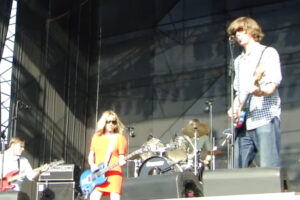
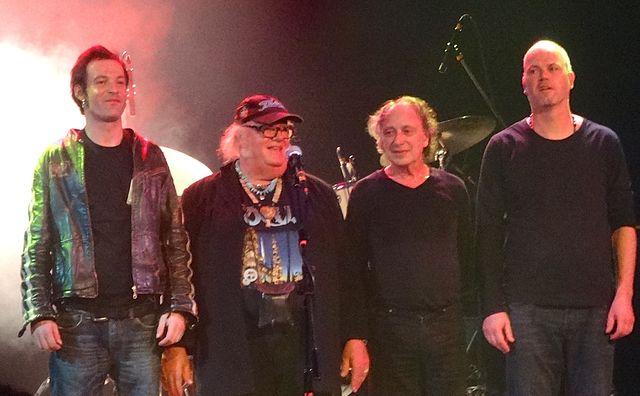



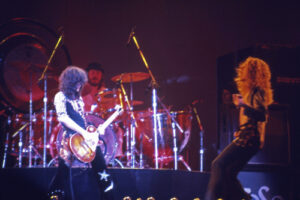

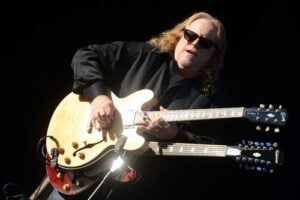


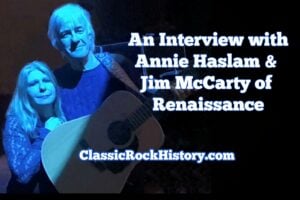















Very comprehensive over view of Frank Zappa. The only thing missing is a blurb on some of the albums he produced. Most notably Captain Beefheart’s “Trout Mask Replica”, The GTO’s “Permanent Damage”, WIld Man Fischer: “An Evening With Wildman Fischer”, Grand Funk’s “Good Singin’ Good Playin’, and Indian violinist L. Shankar’s “Touch Me There”. And of course he gave Alice Cooper their first recording contract.